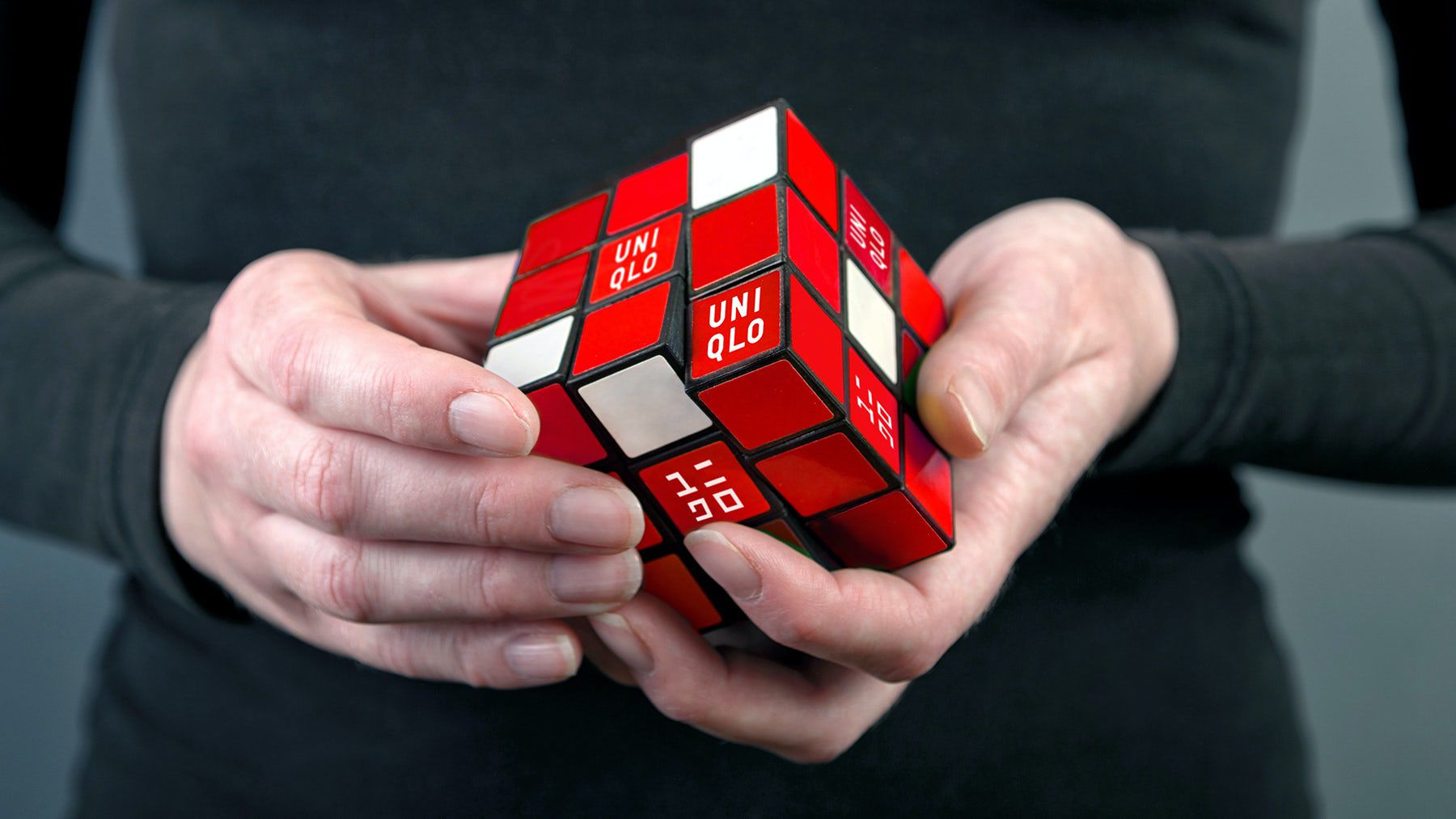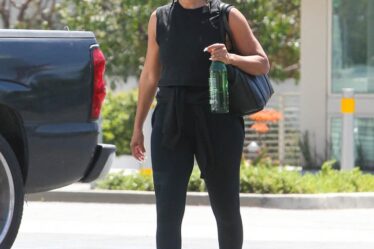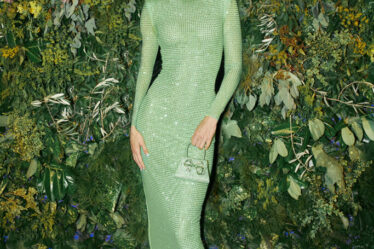
TOKYO — The view from the 33rd floor of the Tokyo Midtown tower, home to Uniqlo’s global headquarters, is almost as ‘mega’ as the ambitions of the company’s founder. By 2020, Tadashi Yanai, chairman, president and CEO of Fast Retailing, Uniqlo’s parent company, aims to turn the Japanese purveyor of colourful, well-designed basics into the world’s number one fashion giant, with revenues of $50 billion per year, surpassing both Zara and H&M, the largest and second-largest apparel chains.
In fiscal year 2014, H&M Group reported sales revenues of 151 billion Swedish krona ($18 billion), while Inditex, parent company of Zara, posted sales of 18.1 billion euros ($20.4 billion). Fast Retailing, by contrast, generated 2014 sales of 1.38 trillion Japanese yen ($13.3 billion), of which Uniqlo made up 82 percent.
With less than five years to go before 2020, how will Uniqlo hit its target?
“This not their realistic financial target. Rather, these figures show their long-term vision or strong will,” cautioned Dairo Murata, an analyst for JPMorgan Securities Japan. “Mr Yanai intentionally issued these figures so that the company’s managers will think about the business from a totally different standpoint and will try new and creative action not based on past routine.”
Indeed, $50 billion by 2020 may be a largely symbolic goal — and a stretch. But one thing is for certain: to have any chance of achieving this number, Uniqlo must win over the world beyond its home country of Japan, where the company operates over 840 stores and has saturated the market.
Growing its global presence
“One of the biggest things is how can we expand and have success outside Japan,” confirmed Yuki Katsuta, Uniqlo’s senior vice president of global research and design. “Planning stores in more countries and also having great success in each country — that’s the key to achieving our business goals by 2020.”
Uniqlo has made considerable progress in Asia. It has over 400 stores in Greater China (Mainland China, Hong Kong and Taiwan), which, in fiscal year 2014, for the first time, delivered revenues of over 200 billion yen, reflecting a year-on-year sales increase of 66.5 percent. In the medium term, Uniqlo plans to increase its retail footprint in Greater China to over 1000 stores. South Korea, where the company currently has almost 140 stores, also performed especially well in 2014, while Southeast Asia (where Uniqlo has just under 100 stores across Malaysia, Singapore, Thailand, the Philippines and Indonesia) reported solid growth.
“China and Korea are doing very well. They’re growing,” said Katsuta. “I have a good feeling about Asia. We have just started to expand our business there. We have a list of places, which includes Singapore, Malaysia… and we haven’t gone to India yet. Asia, where we are having great success, still has huge potential for us.”
But the real test remains. Can Uniqlo conquer the West?
We have to have meaning. A great brand needs to have meaning in people’s lives.
“The US and Europe are also huge potential markets for them, but the nature of these markets is different from Asia. So, it will not be easy for them,” said JP Morgan’s Murata. In 2014, Uniqlo Europe beat expectations, edging into the black, despite the cost of opening its first German store, a 29,000-square-foot flagship in Berlin, which launched last April, adding to the company’s relatively small European presence: 10 stores in the UK, 8 stores in France and 5 stores in Russia. (Uniqlo will open its first store in Belgium this autumn, while new opportunities still remain in Spain and Turkey).
Meanwhile, Uniqlo’s subsidiary in the US — the world’s largest consumer market, where the company’s large-scale ambitions will ultimately live or die — is underperforming. “As the world’s largest consumer nation, the United States offers the most exciting opportunity for Uniqlo outside Asia. But determining how to develop the brand and build a profitable business there is a huge challenge,” wrote Mr Yanai in his annual letter to shareholders, published in January under the heading: “To Be a Truly Global Company.”
“Gaining traction in the US will be vital for the company to achieve its mission to become the world’s leading apparel retailer,” said Bernadette Kissane, an apparel and footwear analyst at Euromonitor. “However, with just 39 Uniqlo stores at the end of 2014, the brand has yet to obtain any visible market share. Additionally, the brand’s store presence remains limited to big city locations.” By contrast, H&M has over 350 stores in the US, where it has penetrated Middle America with retail positions everywhere from Denver to North Carolina. Last month, H&M announced plans to open a store at Green Tree Mall in Clarksville, Indiana, joining six other Indiana locations.
Uniqlo’s existing US stores are concentrated in and around large cities on the country’s sophisticated East and West coasts, where results have been mixed. “New Yorkers have embraced the Uniqlo brand,” wrote Larry Meyer, CEO of Uniqlo USA, in the company’s annual report. Indeed, the city’s three flagship stores — Soho, Fifth Avenue and 34th Street — are generating double-digit sales growth. But as the company has extended its US store network into suburban New York, New Jersey and Connecticut, as well as San Francisco, Philadelphia, Boston and Los Angeles, “some stores have proved more successful than others,” he continued.
This autumn, the company is set to open in Chicago and Denver, its first foray into the American heartland, where Uniqlo faces an even bigger challenge. Here, the company is lesser known and its value proposition may not resonate as strongly with consumers who are less design- and quality-conscious and more accustomed to shopping at big-box discounters like Wal-Mart and Target, with whom Uniqlo cannot compete on price.
Solving the brand puzzle
“The most important thing is how we can [communicate] our brand and our company and our product to customers,” said Katsuta, when asked how Uniqlo would win in the US. “I think that is something we’re not able to achieve yet, at all. We are trying to expand our business and our store network. But at the same time, how can we tell our brand story and our product story? I think that’s the key.”
Enter the legendary creative director John C. Jay. Last October, Mr. Yanai hired Jay (a long-time collaborator who was formerly the global creative director of famed American advertising agency Wieden & Kennedy, best known for its work with Nike) to bring new energy to the Uniqlo brand as president of global creative.
“We’re just starting. There’s 39 [Uniqlo] stores in America — well, there’s 39 Starbucks on every block in America! We’ve barely scratched the surface,” enthused Jay. “I want to take the brand to the next level and the first piece of homework is really to help the world understand who we are. We’re either misunderstood or barely known.”
“As we grow in America, the brand becomes more and more important,” said Jay. “It’s one thing to be successful in Soho and on Fifth Avenue, but now we’re going to be stretching down the West Coast and into the middle of America. The brand is really important, because it cannot be judged simply on price,” he continued.
Even in areas like New York City, where Uniqlo is widely known, the company’s connection with consumers is largely rooted in the quality and affordability of its product. Uniqlo is where you go when you need well-designed, reasonably-priced basics. But its brand remains much less defined and its emotional connection to consumers is limited.
“It’s not good enough for them to understand that we make the best quality,” said Jay. “We have to have meaning. A great brand needs to have meaning in people’s lives. First I need to unlock: ‘Why do we exist?’ Then, the next question is: ‘Who cares? Why should I care?'”
In many ways, Uniqlo is not a fashion brand. It isn’t built around exclusivity, seasonal trends or a top-down stylistic point of view. Instead, the company creates simple, accessible ‘component wear,’ which customers can assemble, Lego-like, in their own unique way. “I hope individual people should have their individual style and individual fashion by themselves,” said Katsuta. “We hope we can provide products to support and build their individual fashion. We don’t want to push: you have to wear it like this and this.”
But if it’s not a fashion brand, what kind of a brand is Uniqlo?
“The Uniqlo brand equals LifeWear,” said Mr Yanai. “We want to help make people’s lives better by providing casual clothes that are based on our Japanese values of simplicity, quality and longevity.” Indeed, Uniqlo — which makes everything from heat-retaining innerwear to affordable cashmere — sees itself as an enabler of all people and all lifestyles. But can the concept of LifeWear be a strong enough signifier to resonate with American consumers and carry Uniqlo to $50 billion in sales?
“In the word LifeWear, there’s at least some kind of message: that we’re making things that are good for you in your everyday life — and for everyone,” said Jay. “People can understand what we’re trying to do is improve the quality of life for everyone. Hopefully that will transfer to some meaning,” he continued. “Clearly, this principle of LifeWear, this constant improvement of things to make your life better — that can manifest in many, many ways, hopefully not just through the product we put on the table, but the kind of stores that we build, the kind of actions we take as a citizen of the city. It’s how we act that is so important, not just what we say.”
“But it’s not void of style. It’s not void of elegance. It’s not void of sophistication,” Jay warned. Indeed, building on a string of successful fashion collaborations, Uniqlo is set to launch capsule collections, this autumn, with Carine Roitfeld and Christophe Lemaire, which the company hopes will help to inject vitality and originality into its brand and product. “All of that is important,” said Jay. “That’s the other trap: we do the basic and the simple and very soon it can become boring or ‘Who cares?'”
For Jay, solving Uniqlo’s brand puzzle will ultimately come down to talent. “The world revolves around talent. So, we need more talent. More types of people. More diversity of people. People that come from different walks of life. That’s the beauty of going global. Now, we can draw from London, from China, from Japan, from New York.”
“As a brand that is more human, I think, right now, we don’t have a voice, so to speak. If you close your eyes and say, ‘What is Uniqlo saying to me?’ you might have a hard time hearing that — at least outside of Japan. We’re working on that.”
Disclosure: Vikram Alexei Kansara travelled to Tokyo as a guest of Uniqlo.



